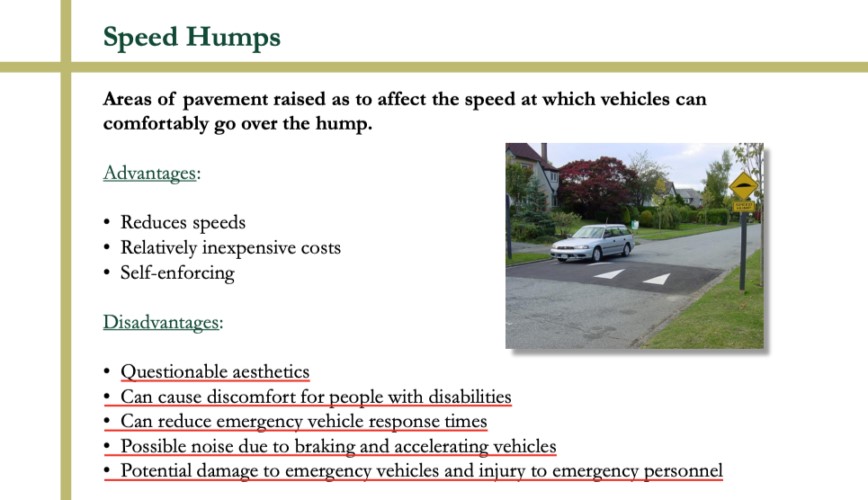
The city of Detroit recently identified more than 2,000 new speed hump locations. The plan is to install 3,000 of the traffic obstacles by the end of 2022.
That is in addition to the 5,500 humps added throughout the city in 2021. When this street obstacle program started as part of Detroit’s Complete Streets program, the city only had 400 in place. If plans meet expectations, Detroit will have more than 10,500 speed humps to disrupt traffic before 2023.
Should Detroit’s nickname be changed to reflect the new reality?
Speed humps are different than speed bumps and cushions. They are generally 12 to 14 feet long, spanning the width of the road and ranging from three to four inches high. The shapes can be parabolic, circular, or sinusoidal. Speed humps are typically placed on residential streets, mid-block between intersections. One is often deemed insufficient. A series of two or three speed humps set 350 to 550 feet apart are commonplace to prevent drivers from speeding up between them. Warning signs are typically displayed ahead of the road hazard. Even with the signs, the lower visibility conditions of bad weather, or dawn/dusk can cause some very unpleasant surprises for drivers on speed hump streets.

This graphic comes from California Member Stacey Charlton, who wrote How to Fight Speed Bumps, Humps, and Cushions Part 1 and Part 2 that was featured in December 2021 on the NMA’s Driving in America Blog.
Detroit’s public works department uses the following criteria for the placement of speed humps:
- Local residential streets with speed limits of 25 mph or less
- Nearby schools and parks
- Streets with a record of speeding and traffic accidents
- Streets with cut-throughs to or from arterial roads
- Areas with block housing density
- Areas with numbers of children present
- Resident support on the block and a valid request made to the city
While some neighbors might like the speed humps, not all do. Detroit resident Pamela Foster exclaimed, “It’s too many of them…they’re putting them in spots that we don’t need.” Often the residents reconsider after the humps have been in place for a while and have to be dealt with daily. Be careful what you wish for.
It will be interesting watching for reactions by Detroit commuters as the hump count continues to grow.



